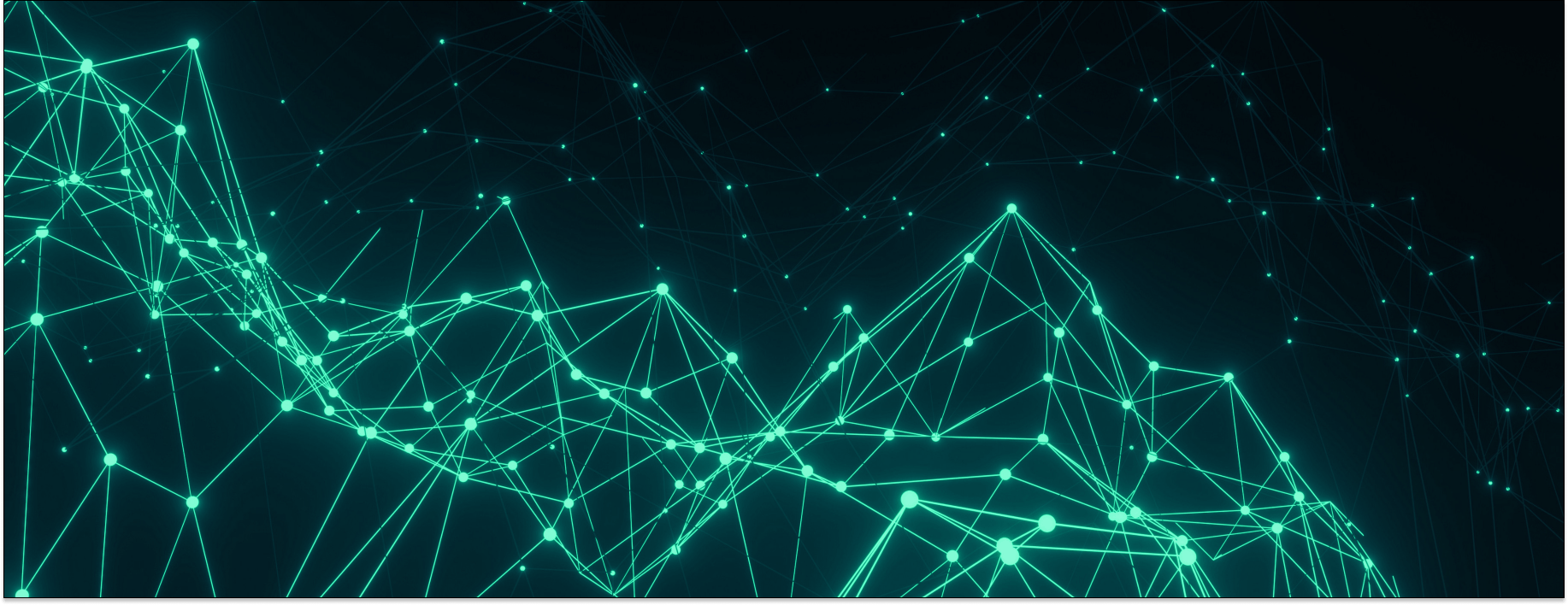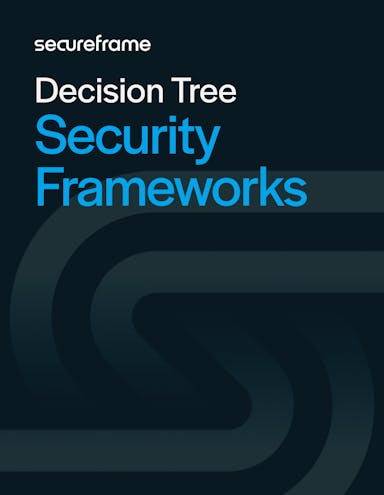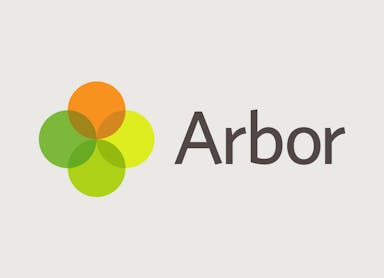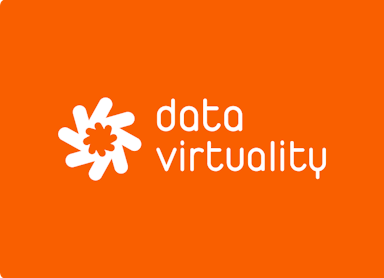
The Ultimate Guide to Managing Multi-Framework Compliance: Best Practices & Strategies
Emily Bonnie
Senior Content Marketing Manager
Rob Gutierrez
Senior Cybersecurity and Compliance Manager, CISA, CCSK, CMMC RP
Demonstrating compliance with multiple security and regulatory frameworks has become essential for building customer trust, improving operational efficiency, and abiding by legal requirements. In 2023, almost 70% of service organizations said they need to demonstrate compliance or conformity to at least six frameworks spanning information security and data privacy taxonomies.
In addition, data privacy has become a core expectation for 89% of consumers. Customers are demanding rigorous assurances that their data is protected, and meeting these expectations through strong compliance programs can significantly enhance your organization’s reputation and marketability.
Yet the benefits of multi-framework compliance are often offset by the logistical challenges it presents. Managing the overlapping and sometimes conflicting requirements of various frameworks can be daunting, requiring substantial resources and meticulous coordination.
Let's examine the most commonly paired compliance frameworks and regulatory standards for specific industries, and dive into some practical strategies and best practices for overcoming the challenges of multi-framework compliance.
The benefits of multi-framework compliance
Complying with multiple security frameworks might seem redundant, especially given how time and resource-intensive it can be. But it can also bring compelling benefits, making it well worth the effort compared to focusing on a single framework.
A more comprehensive, resilient security posture
Different security frameworks emphasize different aspects of information security. By complying with multiple standards, organizations can cover a wider range of security controls and practices, leading to a more robust and comprehensive security posture. Multiple frameworks also help in identifying and mitigating a broader spectrum of risks.
By adhering to multiple frameworks, organizations are also better prepared to adapt to new regulations as they emerge. Many frameworks, including ISO 27001 and NIST CSF, emphasize continuous improvement, which allows organizations to systematically evolve their security practices in response to new threats and vulnerabilities.
Market expansion and competitive differentiation
Different clients may have different compliance requirements. For example, a European customer might prioritize ISO 27001 compliance, while a US-based client might require a current SOC 2 report. Multi-framework compliance ensures that your organization can meet the varied security requirements of its diverse client base. Complying with internationally recognized standards like ISO 27001 and GDPR also enables companies to operate in global markets without facing regulatory barriers or getting hit with unexpected and costly violation penalties.
Not to mention multi-framework compliance can serve as a differentiator in an increasingly competitive marketplace. According to McKinsey research, 71% of consumers say they would stop doing business with a company if it mishandled their sensitive data. Compliance across multiple standards signals to potential clients that your organization is serious about protecting their data, building valuable credibility and trust.
Commonly paired regulatory standards and security frameworks
Let’s take a closer look at some of the most commonly paired security frameworks across various industries and examine what makes them complementary.
SaaS & technology: SOC 2, ISO 27001, NIST CSF, GDPR, CCPA, NIST AI RMF, ISO 42001
Depending on its customer base, target market, regulatory environment, and deployed technologies, SaaS companies may pursue compliance with a combination of several information security frameworks, data privacy regulations, and AI governance frameworks.
For example, a SaaS platform that operates in the US may only need SOC 2 and CCPA/CPRA compliance to be competitive in the marketplace and satisfy regulatory requirements. A different SaaS platform that incorporates AI features with customers in both the US and Europe could need to achieve and maintain compliance with SOC 2, ISO 27001, ISO 42001, GDPR, CCPA/CPRA, and NIS2.
For example, SOC 2, ISO 27001, and NIST CSF focus on information security and are some of the most in-demand voluntary security frameworks globally. Many SaaS organizations choose to pair SOC 2, which is popular in North American markets, with ISO 27001, which is widely recognized internationally, to satisfy customers and build trust with prospects across their entire target market. Both of these frameworks complement NIST CSF, which provides a strong risk management framework.
For SaaS companies operating in or serving customers in the EU, GDPR compliance is mandatory and helps protect data privacy and transparency. The CCPA/CPRA is a similar state law in California that also provides residents with rights over their personal data. Organizations that have customers in California and abroad likely need to pair GDPR with CCPA/CPRA compliance to satisfy regulatory requirements and earn customer trust.
Lastly, as AI technologies become more prevalent, adhering to frameworks like NIST AI RMF and ISO 42001 mitigates risks associated with AI and ensures AI systems are developed and deployed responsibly. Compliance with both these frameworks allows companies to adopt a holistic approach to AI risk management. For example, ISO 42001 places a strong emphasis on the ethical aspects of AI development, including fairness, accountability, and transparency. This complements NIST AI RMF’s focus on risk management by incorporating an additional layer of ethical oversight.

Security frameworks decision tree
Use this series of questions to help select the best security framework(s) based on your or your clients' industry, data, and needs.
Healthcare: HIPAA, HITRUST
HIPAA regulations define mandatory standards for protecting sensitive patient data, while HITRUST CSF incorporates various healthcare regulations and standards into a single, certifiable framework. Many healthcare organizations pursue HITRUST as a way of simplifying the process of achieving and maintaining HIPAA compliance, while also adopting a broader security framework that covers additional standards like NIST 800-53 and ISO 27001.
Government agencies and contractors: FISMA, NIST 800-53, NIST 800-171, FedRAMP, StateRAMP, TX-RAMP, CMMC
Companies that wish to secure contracts with federal, state, or local government agencies are subject to a variety of regulatory requirements to prove comprehensive information security practices. FedRAMP, StateRAMP, TX-RAMP, CMMC, and FISMA all provide a structured approach to security for cloud services and federal information systems. NIST 800-53 and NIST 800-171 offer detailed control requirements that complement these frameworks, ensuring a robust security posture.
Pairing these frameworks ensures a consistent, thorough, and efficient approach to managing cybersecurity risks, addressing both federal and contractor-specific requirements. For example, pairing FedRAMP/StateRAMP with CMMC demonstrates comprehensive security for cloud service providers that wish to be government contractors. Achieving FISMA, NIST 800-53, and NIST 800-181 compliance together ensures robust security controls for federal information systems and the protection of CUI. Additionally, many of these federal frameworks have significant requirement and control overlap so if compliant with one there’s a good chance many of the implemented controls will apply across the board creating compliance efficiencies.
Fintech and e-commerce: PCI DSS, SOX, GLBA, FTC Safeguards, SOC 2
E-commerce companies may pair PCI DSS with SOC 2 to provide comprehensive protection for both payment card data and sensitive company information. Other financial services organizations may need to comply with both SOX and GLBA to meet regulatory requirements for financial reporting and protecting consumer financial information. Combining frameworks helps organizations meet diverse regulatory requirements and reduce the risk of non-compliance, as well as safeguard their intellectual property and proprietary company data.
Recommended reading

How Arbor Education Streamlined Multi-Framework Compliance Across Multiple Business Units with Secureframe
Best practices to simplify multi-framework compliance
While multi-framework compliance is essential for building customer trust, enhancing security, and expanding into new markets, it also presents significant logistical challenges. These practical tips can help your organization overcome these challenges, streamline its compliance processes, and ensure continuous compliance with regulatory requirements.
Consolidate efforts with multi-framework control mapping
Even similar frameworks have their own unique set of requirements. SOC 2 has the Trust Service Criteria, ISO 27001 includes Annex A controls, and NIST CSF outlines a range of functions, categories, and subcategories — to name just a few. The sheer volume and complexity of these requirements can be overwhelming. And since each framework uses its own terminology, making direct comparisons and mapping across controls is not always clear-cut.
Many frameworks also have overlapping requirements, which can lead to duplicated work and redundant controls if not properly mapped and managed. Plus, security frameworks and regulatory requirements are constantly evolving to address new threats. Keeping up with these changes and updating control mappings accordingly is a continuous and time-consuming effort.
Crosswalking security controls manually with documents and spreadsheets is at best inefficient; at worst inaccurate and prone to error. Software solutions that offer pre-built mapping templates and can automate the process of aligning controls with various standards, providing a centralized system for managing and monitoring security controls across frameworks.
Pro tip: Use a compliance automation tool with AI to automatically map controls to multiple compliance and regulatory frameworks. Secureframe Comply AI for Control Mapping scans your control library and automatically suggests the most appropriate controls across the frameworks you’re managing. It also extends to risk assessments, suggesting mitigating controls that can be quickly mapped to specific risks.
Integrate compliance requirements into your risk management framework
Both risk management and compliance functions exist to improve business operations and strategic decision making. And they involve the same core set of activities: risk assessments, policies and procedures, internal controls, testing, documentation, and reporting.
By integrating compliance requirements into your risk management framework, your organization can streamline both functions, leading to more efficient use of resources and consistent policy and procedure implementation.
Organizations can take practical steps to integrate compliance into their risk management strategies, starting with clearly defining a risk appetite that accounts for compliance risk and requirements. This will allow you to make risk-based decisions that consider both compliance and overall business risk, ensuring that compliance is integrated into strategic planning.
You can also include compliance risks in your regular risk assessments to identify potential areas of non-compliance. Risk assessment tools that evaluate both security and compliance risks can give you a more holistic analysis of your risk profile and better visibility into high-priority threats.
Pro tip: Secureframe allows you to link controls to known risks so that you can coordinate your risk management strategies with your compliance requirements, assess residual risk, and close any gaps. You can also easily track changes you make to individual risks and view point-in-time snapshots of your risk register to show both internal and external compliance auditors the specific steps you’ve taken to strengthen your security posture.
Recommended reading

Compliance and Risk Management: Why Integrating Them Is Key to Protecting Your Organization
Implement control monitoring for proactive remediation and continuous compliance
Continuous monitoring helps organizations maintain compliance with multiple regulatory requirements by allowing them to take a proactive approach to vulnerability management. Rather than discovering non-compliance issues or failing controls during a point-in-time audit, continuous monitoring tools automatically scan your infrastructure to flag potential issues as they occur. Teams can then quickly close any compliance gaps or strengthen their security measures before they can cause damage to your organization's information systems, data, compliance status, or brand reputation.
Pro tip: Leverage AI remediation tools to simplify the process of fixing failing cloud tests. Secureframe continuously monitors your tech infrastructure to identify failing controls, then Comply AI for Remediation automatically generates fixes as infrastructure-as-code. Users can easily copy, paste, and deploy fixes to their cloud environment.
Centralize policy and document management
Managing policies and documentation can be overwhelming for a single framework — adding one or several standards can quickly spiral out of control.
Different frameworks and regulations often have overlapping requirements but with slightly different focuses or terminologies. This can lead to confusion and redundancy, making it difficult to ensure all criteria are met without duplicating efforts. For example, both ISO 27001 and SOC 2 require documented risk management processes, but the specific requirements vary.
Another challenge is lack of centralization. Security policies might be managed by the IT department while data privacy policies are handled by legal. When policies, procedures, and other documentation is spread across departments and systems it can lead to inefficiencies and headaches in maintaining a coherent compliance strategy.
One way to overcome this challenge is by implementing a centralized compliance document management system to maintain a single source of truth for all policies, audit evidence, and procedure documents This ensures consistency and easy access for updates, personnel onboarding, security awareness training, and regular cybersecurity audits.
Secureframe allows you to easily manage and access all your documentation in a single platform so you never fall out of compliance. Quickly build a compliant policy library using auditor-approved templates, track changes, set access controls, and assign document owners to simplify review cycles.
Pro tip: When drafting or updating policies, track framework requirements against your policies and ensure all of them are met. Note references to the various frameworks within your policies to make it easier to update to reflect changing requirements and demonstrate to auditors that you’ve addressed specific compliance requirements.
Embrace automation as a single source of truth to reduce audit fatigue
Audit fatigue is a common challenge for organizations that need to comply with multiple regulatory frameworks and undergo frequent audits. The repetitive and resource-intensive nature of manual compliance tasks can lead to burnout, errors, and inefficiencies. Compliance automation offers a solution by streamlining compliance processes, reducing manual efforts, and ensuring continuous compliance all in one place.
Automate routine audit preparation tasks like evidence collection, security awareness training, and regular risk assessments to reduce manual work, eliminate audit fatigue, and allow your security and IT teams to focus on essential business priorities. Automated systems can also collect and process data more accurately than manual methods, ensuring that audit reports are based on up-to-date and reliable information.
Pro tip: Use dynamic compliance dashboards to get real-time visibility into your compliance status across multiple frameworks and regulations. With Secureframe’s Frameworks dashboard, you can review all of your framework requirements, controls, and compliance status in a single screen. The data collected in Secureframe is automatically tracked and consolidated into reports so you know if your organization is following compliance requirements throughout the year and can easily track progress toward audit readiness.
Simplify regulatory change management
Managing regulatory changes can be particularly challenging for organizations that must comply with multiple frameworks. Maintaining a central repository for all regulatory requirements, controls, policies, and procedures, such as a GRC platform or compliance management system, can simplify the process and ensure that changes are applied consistently across your organization. Technology solutions such as regulatory compliance software, workflow automation tools, and regulatory intelligence platforms can also significantly streamline regulatory change management processes, enhance efficiency, and improve visibility into new and changing regulatory requirements.
Prioritize regulatory changes by assessing their potential impact on your organization's operations, processes, products, services, and compliance obligations. Focus resources on addressing high-risk changes first, while systematically ensuring that all relevant changes are addressed over time.
Maintaining comprehensive documentation is crucial for streamlining audits and reviews. Implement version control systems to track changes to policies, procedures, and controls, ensuring that historical data is preserved and easily accessible.
Pro tip: Use a security compliance tool that’s continually updated to reflect the latest regulatory and framework changes. The Secureframe platform is built and maintained by compliance experts and former auditors, so any regulatory changes or framework updates are reflected in the platform and communicated to customers.
Recommended reading

How Data Virtuality Accelerated Multi-Framework Compliance and Client Security Evaluations to Close Deals Faster
Manage multi-framework compliance in a single automation solution
Secureframe’s GRC platform is designed to streamline the process of achieving and maintaining multi-framework compliance, significantly reducing the complexity and effort involved while ensuring a robust security posture.
- Centralized compliance management: Use dashboards to track and manage all compliance requirements, controls, and activities for different frameworks including SOC 2, ISO 27001, GDPR, and dozens more. Plus, maintain all compliance-related documentation, policies, and procedures in a single, easily accessible repository.
- Automated control mapping and common controls: Secureframe automatically maps your controls to the requirements of various frameworks. This ensures that a single control can address multiple compliance needs, reducing the effort required to manage overlapping requirements. Common controls that are aligned with multiple standards also make it easier to implement and maintain controls across frameworks.
- Continuous monitoring and alerts: Secureframe continuously monitors your security environment, automatically checking the status of your controls and compliance posture in real time. Quickly identify any compliance breaches or control failures to address issues before they escalate.
- Automated evidence collection: Compliance requires you to prepare hundreds of documents and audit evidence such as access logs, configuration screenshots, and policy documents. Secureframe eliminates countless hours of manual work by automating evidence collection.
- Simplified regulatory change management: Secureframe tracks changes to supported regulations and standards, automatically updating the platform to reflect new compliance requirements and controls.
- Expert support: Access our team of 30+ compliance experts and former auditors and receive tailored recommendations to support your specific compliance needs and industry requirements.
In a recent survey, 88% of Secureframe users said the platform helped them speed up time to compliance for multiple frameworks. Other benefits they reported include:
- 95% saved time and resources obtaining and maintaining compliance
- 71% improved visibility into their security and compliance posture
- 50% reduced the costs associated with their compliance program
To see how Secureframe can help you save time and resources managing multi-framework compliance, schedule a demo with a product expert.
Use trust to accelerate growth

Emily Bonnie
Senior Content Marketing Manager
Emily Bonnie is a seasoned digital marketing strategist with over ten years of experience creating content that attracts, engages, and converts for leading SaaS companies. At Secureframe, she helps demystify complex governance, risk, and compliance (GRC) topics, turning technical frameworks and regulations into accessible, actionable guidance. Her work aims to empower organizations of all sizes to strengthen their security posture, streamline compliance, and build lasting trust with customers.

Rob Gutierrez
Senior Cybersecurity and Compliance Manager, CISA, CCSK, CMMC RP
Rob Gutierrez is an information security leader with nearly a decade of experience in GRC, IT audit, cybersecurity, FedRAMP, cloud, and supply chain assessments. As a former auditor and security consultant, Rob performed and managed CMMC, FedRAMP, FISMA, and other security and regulatory audits. At Secureframe, he’s helped hundreds of customers achieve compliance with federal and commercial frameworks, including NIST 800-171, NIST 800-53, FedRAMP, CMMC, SOC 2, and ISO 27001.